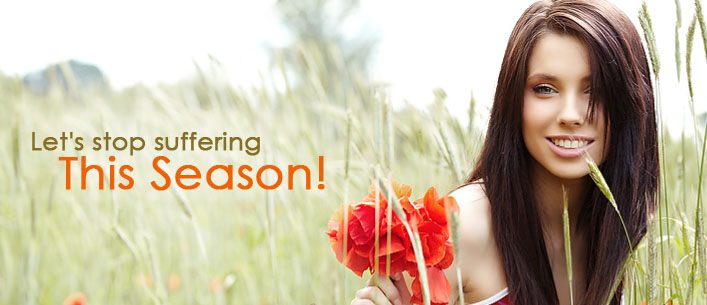 Ha!I bet you wonder how exactly I am going to link all four aforementioned subjects with autism, don’t you?Made ya click!
Ha!I bet you wonder how exactly I am going to link all four aforementioned subjects with autism, don’t you?Made ya click! Sorry, the sex I want to bring up isn’t the kind that sells stuff.It’s the kind that begs the question: male or female?Lately I’ve been thinking a lot about how autism displays itself in people, and how the common red flags might be affected by gender.
The lie?Well, the lie that some would feed us is that men and women are equal and that our brains function the same way.Now before you get all hot and bothered about equality, please note that I didn’t say, «the lie is that men and women are of equal worth».That is a completely separate issue.But men and women aren’t born on equal footing at all.Brain science has a lot to say about how our brains function completely differently on Venus than they do on Mars, and I can say with certainty that this affects what autism looks like in boys, and how it looks a bit different in girls.
I’ve been reading a book that is fascinating.It’s called Brain Sex, by Dr.Ann Moir and David Jessel, and it details how the human brain is shaped and changed in utero according to our genders.It’s so interesting to note that scientific studies back up the jokes that men and women have made about each other for centuries.Women (in general) are born with brains that are better wired for reading facial expressions and other types of non-verbal communication, conversing, intuiting the feelings of others, and acting with compa*sion.Men are (in general) born with brains that are superior to those of women in the areas of spatial abilities and logic.There are, of course, exceptions to these rules, and the authors address those exceptions too, which is why I would recommend the book to anyone who has struggled with gender identity issues.But what does this all have to do with autism?
Boys supposedly outnumber girls in the autism community 4 to 1, but do they really?If the female brain is already wired with a propensity toward social thinking and reading facial expressions, does that mean that some of the hallmarks of autism might go undetected in a little girl?Well, I am no scientist, but one could easily suppose it might be true.
In our house, this is what it looks like: our son who has autism looks cla*sic.Even though he is «high-functioning», when you see autistic tendencies rise to the surface, those tendencies are easily identified as what the average person who knows anything about autism would throw into the category labeled «autism».You see Rain Man.He gets stuck on one idea and can’t seem to get off of it.Many a paragraph in many an autism textbook has seemingly been written by someone who has cameras secretly planted in our home.As a little guy he did it all: hand-flapping, staring into space, aparting himself in a corner rather than interacting, choosing one subject and caring about little else, avoiding eye contact, melting down when things changed or didn’t go exactly as he had expected.Easy, right?Check, check, check, check .yep, it’s autism.
Our daughter, on the other hand, didn’t even begin to concern me until later in her development.As she neared the age of three even though she was verbal I realized she didn’t really seem to understand directions, and wasn’t able to answer complex questions as her peers could.Of course since I already had a child who was diagnosed, the «A word» came to mind, but I was easily able to dismiss those concerns for quite some time because she didn’t line toys up in rows and scream when someone moved them.She didn’t pace back and forth in a precise line for fun, or flip her fork in front of her face in order to visually stim.If she had any «perseveration», she seemed to get stuck on an emotion and difficulty switching to a new one, but that’s not perseveration!Or is it?
C got her autism diagnosis at the age of 3 and a half and even then, it was the famous «PDD-NoS» (Pervasive Developmental Delay Not Otherwise Specified) which, as my husband and I like to say, seems to actually mean, «Well, something’s messed up about this kid but we’re not sure what.We’ve ruled everything else out and we don’t have a good answer, but she seems to need a label, so here ya go.» Thank goodness the aforementioned acronym is shorter than what ours would be.Kids who get the PDD-NoS label fit two of the diagnostic categories for autism, but not all three.C had a delay in communication (check), a delay in social skills (check), but no repetitive or stereotyped behaviors.Or did she?
Couldn’t it be possible that if you are born with a brain that is structured to give you a propensity toward social abilities and experiencing strong emotions, that if you perseverated, you might not perseverate on THINGS, but rather on EMOTIONS themselves?
Often on our journey I have questioned whether or not C actually is on the spectrum.I know there are people who don’t believe in labeling, and that faction of the population might wonder why I would even bother letting someone slap an acronym at the top of C’s chart, especially if I doubted its validity.Those people haven’t watched what happens to C when everything around her changes and all of her girl-colored autistic tendencies rise to the top.
A few weeks ago we had some friends stay with us, and even though we were all (including C) happy to receive our friends, obviously everything changed in our home for a while.There were more people.There was more noise.There was less predictability.BigB did what I expected him to do.He stashed away his favorite things so nobody could touch them, carefully arranged all of his things on his top bunk, and retreated to his spot when he felt overwhelmed.
C, on the other hand, lost all grip on her emotions.One evening she had a meltdown in the bathtub, curled up in a fetal position wailing that she hated our family and wanted to move out, and cried until she pa*sed out for the night.She began policing all of the children, telling them what to do and got very angry when nobody regarded her wishes.She yelled rude things at our friends.One afternoon she got physical with me, attempting to push me around the house in anger.
That is where the videotape comes in.I was at a total loss as to what to do, so I turned on the video camera thinking at least if she could see how out of control she was, maybe she could get a grip.(Please don’t follow my example videotaping someone mid-meltdown is not actually helpful at best, and thinking back on it now, it was probably actually cruel.) *sigh* Sometimes as a mom we do what occurs to us in the moment, and learn from our mistake later.At least I am hoping I am not the only one who has to learn this way.
Needless to say, as I later vented to a friend on the phone about how difficult and unreasonable my daughter was being and how hard of a time I was having dealing with her behavior, I once again came to the very humble place of realizing that in switching up her environment without much warning and then expecting her to behave like a typical kid mightwith a hiccup or two, but no huge to-doall of «my» angst was actually my fault.And that, dear friends, is why it’s OK with me to have that goofy acronym stamped at the top of her chart.On a good day, when I don’t ignore the acronym, and I remember that despite the fact that she looks like a typical little girl, she really does need some extra support, that acronym serves its purpose well.
And now, for the butterflies.Once, a couple of years back, Big B came to me and said, «Mom!I suddenly figured something out!People are like butterflies!When we are in our mom’s womb we are like caterpillars.Then, when we are born, it’s like we are born into our chrysalis.Then, when we die it’s like we leave our chrysalis and become butterflies who fly to heaven!»
The thought of simply being stuck in a chrysalis the entire time you are alive isn’t exactly appealing.It sounds so well, boring.But I realized that I agree with Big B’s idea.Life is like a cla*sroom for our souls.Every thing we experience while we live on this earth, if we keep looking to our Father for direction, has the potential to change us for the better and shape us into something more beautiful.Dealing with autism can absolutely stink.As a good friend said to me recently, «Autism is terrible and autism is beautiful.» She’s right.Since we were created for relationship, and autism tends to mess with our ability to create relationships, it can be terrible.But if we use the experiences autism brings into our lives to learn the lessons we are here to learn, autism can be a beautiful thing.Even a meltdown can grow a soul.
lies so I can provide my daughter with the support she needs.In the future I will avoid using videotape as a means of humiliating her into «behaving» and remember that little acronym is stamped on her chart to remind me to provide the kind of support that will prevent such behaviors from happening in the first place.And as I rely on the grace and love of my Father while I bumble through this wh*le parenting pursuit, I will look forward with hope to the day that C and I both emerge as butterflies.Like this:
Health Solutions - Stress Relief





















No comments:
Post a Comment
Note: Only a member of this blog may post a comment.